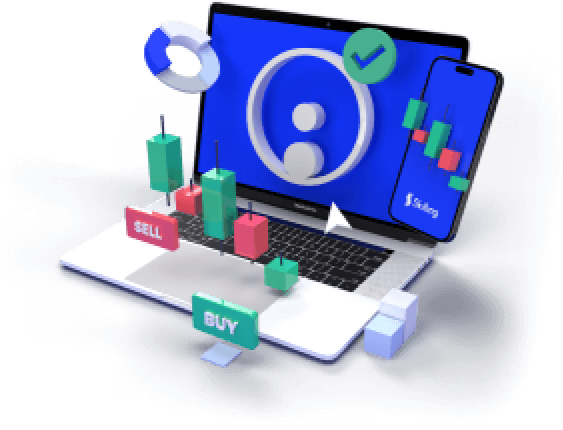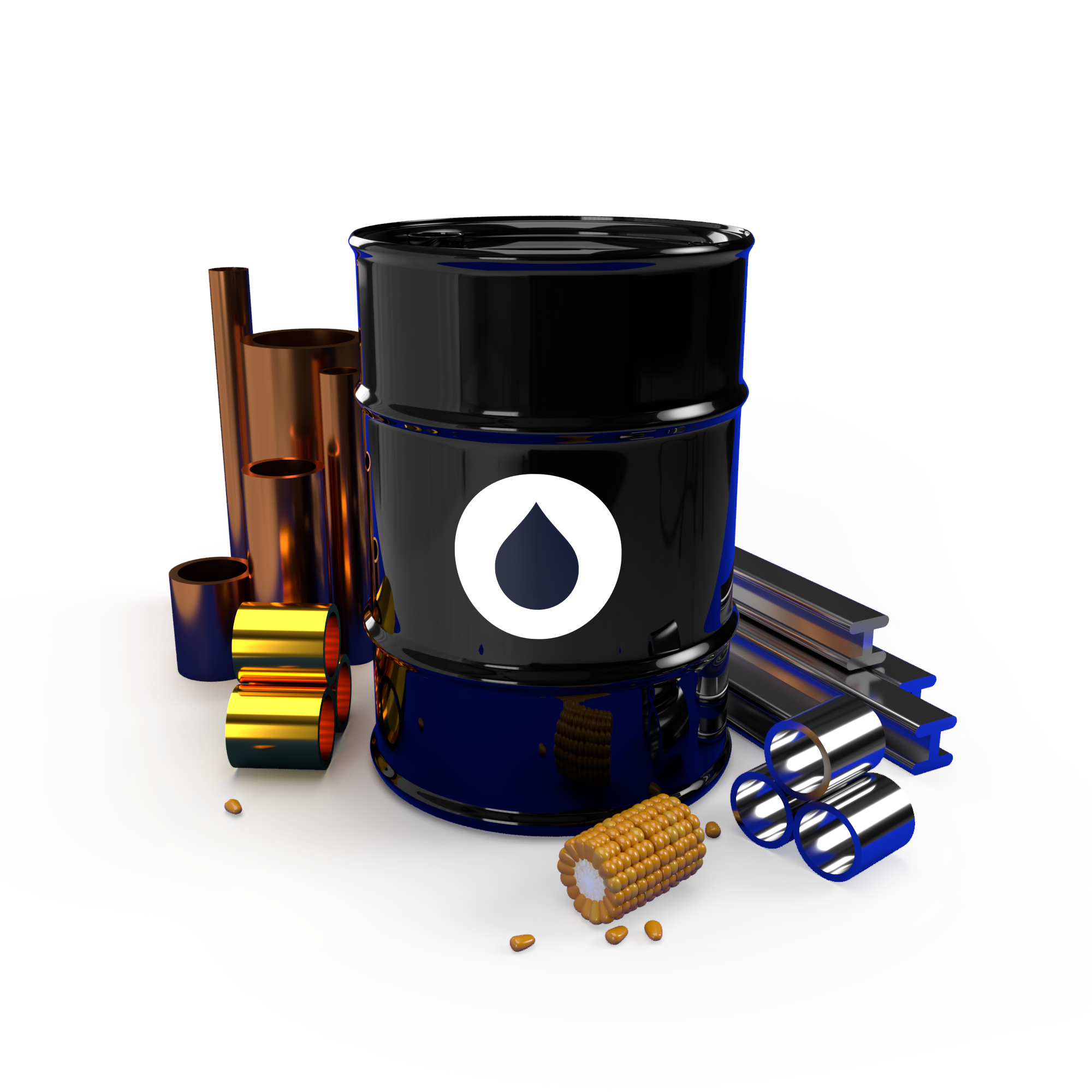Gold and silver have long been the twin pillars of the precious metals market, but 2025 is revealing a striking divergence in their behaviour. As traders look for clarity in a volatile macro landscape, understanding the drivers behind gold and silver price moves is more critical than ever.
In early 2025, gold has reached new nominal highs above $2,400/oz, while silver has lagged, hovering just under $30/oz. This discrepancy reflects more than just differing supply/demand dynamics, -it highlights how the broader market is interpreting risk, monetary policy, and economic resilience.
Let’s explore what’s powering this divergence and what traders might need to consider when comparing gold vs silver in 2025.
Access 1,200+ global CFDs instruments.
Access a plethora of trading opportunities across the financial markets.

Inflation, Rate Cuts and Central Bank Demand: Gold’s Macro Tailwinds
Gold continues to behave as the classic hedge in uncertain times. With inflation still sticky in parts of the global economy and the U.S. Federal Reserve signalling two interest rate cuts in the second half of 2025, institutional demand for gold has surged. Central banks, -especially in Asia and the Middle East, remain net buyers, adding to their gold reserves as a diversification away from the US dollar.
In addition, concerns over geopolitical risk (Ukraine, Taiwan, Middle-East tensions) are keeping safe-haven flows tilted toward gold. These macro tailwinds have helped gold maintain strong momentum since late 2024.
For traders, the key takeaway is that gold’s price action in 2025 is still being driven more by macro risk sentiment and central bank flows than by industrial use or physical supply constraints.
Silver: Caught Between Industrial Hopes and Investment Lows
Silver’s story in 2025 is more complex. While it shares safe-haven status with gold, silver also has significant industrial demand, especially from the renewable energy and electronics sectors. The push for solar and green tech should theoretically support silver prices. But so far this year, speculative positioning in silver futures has remained muted.
The problem? Demand from investors hasn’t kept pace with industrial interest. ETF outflows in early 2025 suggest many retail and institutional traders are still sitting on the sidelines, preferring gold’s relative stability.
Additionally, mining output has rebounded in Latin America after 2023 disruptions, softening some of the supply-side pressure. The net effect: silver is trading in a narrower range than gold and remains sensitive to both inflation expectations and economic data.
Gold vs Silver Price Action during the second half of 2025
From a technical perspective, gold and silver are offering very different profiles in 2025. Gold is trading well above its 200-day moving average, with strong upward momentum supported by both trend-following funds and long-term investors. Silver, by contrast, is showing signs of consolidation, with the $29–30/oz range acting as resistance and $26/oz providing a tentative floor.
Gold’s technical breakout:
Gold’s price action since January 2025 has been primarily defined by a bullish breakout from the $2,100 resistance level. Once that barrier was cleared, gold quickly accelerated toward the $2,400–2,450 zone. Traders are watching for a potential double-top pattern near current highs, but for now, RSI (relative strength index) and MACD indicators remain positive.
Silver’s sideways structure:
Silver’s chart paints a more hesitant picture. Despite bullish fundamentals from the green energy transition, silver has failed to break out from its multi-year resistance zone. Technical traders will note that silver is currently forming a potential ascending triangle, which could signal a breakout if $30 is breached convincingly. But failure to do so could trigger a retest of support near $25.
For market participants, this divergence in price action underlines how macro narratives are leading gold, while silver remains tied to cyclical and industrial sentiment.
Volatility Trends: How Gold and Silver Respond to Macro Shocks
Volatility metrics tell another key part of the story in 2025.
Gold : Realised and implied volatility in gold has remained relatively moderate, despite geopolitical tension and central bank uncertainty. This suggests gold is functioning effectively as a stabiliser in portfolios, attracting capital from risk-off investors. Implied volatility in gold options is averaging around 12–14%, which is relatively low given recent price gains.
Silver : In contrast, silver continues to be one of the more volatile precious metals. Historical volatility is averaging close to 25%, with large intraday swings triggered by economic data surprises, especially related to China’s industrial production and global manufacturing PMI figures.
This makes silver attractive to short-term traders and swing traders, but also increases the risk of false breakouts or reversals. Volatility-sensitive strategies like straddles, iron condors, or momentum-based futures plays are far more common in silver than in gold.
Why miss out on the commodities market's potential?
Discover the untapped opportunities in top traded commodities CFDs like gold, silver & oil.

Gold vs Silver for 2025 Traders: Trends to Consider
1. Macro hedge vs industrial play:
Gold is primarily a macro hedge in 2025, while silver is still trying to balance investment flows with industrial utility.
2. Stability vs opportunity:
Gold offers relative price stability with slower directional moves. Silver offers more volatility and potentially higher short-term rewards for those who can manage the risk.
3. Technical setups diverge:
Gold is in a confirmed uptrend; silver is still in a breakout watch phase.
Demand Trends: Where Is Physical Gold and Silver Flowing in 2025?
One of the most essential divergences between gold and silver in 2025 lies in the underlying physical demand flows .
Gold Demand: Central Banks & Safe-Haven Buyers Dominate
In the gold market, central bank purchases remain a powerful driver . The People’s Bank of China, Reserve Bank of India, and several Middle Eastern banks have continued accumulating gold reserves in 2025 as a hedge against global uncertainty and de-dollarisation pressures.
Consumer demand in India also remains strong, particularly in the wedding and festival seasons, although high prices are leading to increased recycling and lower tonnage volumes in jewelry.
ETFs have also returned as net buyers of gold in Q2 2025 after a long period of outflows in 2023–2024. This shift in sentiment has provided additional support to prices above $2,300/oz.
Silver Demand: Industrial Users in the Spotlight
Silver demand, meanwhile, is being heavily shaped by green energy investments and electronics.
- Solar panel production continues to consume massive amounts of silver, with 2025 marking a record year in photovoltaic demand.
- Automotive manufacturers are also driving silver use higher due to EV-related electronics and charging infrastructure.
- Physical investment demand (coins and bars) is more mixed, with some retail investors taking profits after the 2020–2021 spike.
ETF demand for silver has lagged compared to gold, partly due to its volatility and speculative reputation. But a breakout above $30 could reignite retail buying through funds.
Price Forecasts: What Are Analysts Saying About Gold and Silver in 2025?
Here’s how several leading institutions are projecting gold and silver prices for the remainder of the year:
| Institution | Gold Forecast (Q4 2025) | Silver Forecast (Q4 2025) |
|---|---|---|
| JP Morgan | $2,450 | $30 |
| UBS | $2,500 | $32 |
| Goldman Sachs | $2,600 | $34 |
| HSBC | $2,380 | $29 |
The consensus is clear: most analysts expect gold to remain elevated or continue higher, while silver may finally break its resistance if industrial momentum holds.
Relative Strength and Risk-Reward in 2025
- Gold : Offers lower volatility, institutional backing, and long-term macro resilience. However, much of the bullish narrative is already priced in, making it potentially less rewarding for aggressive traders unless new catalysts emerge.
- Silver : More under-owned, higher upside potential, and deeper pullbacks. But it also comes with significantly higher short-term risk and dependency on industrial momentum, especially from China.
Ultimately, for traders comparing gold vs silver in 2025, the choice depends on risk tolerance, time horizon , and whether the strategy leans toward macro hedging or momentum exploitation.
Trading Insights to Consider: Gold vs Silver in Volatile Markets
For traders on the Skilling platform, the 2025 setup for gold vs silver offers very different strategic profiles .
Gold Trading Strategies in 2025
- Range Breakouts : Gold has formed strong horizontal support zones near $2,300 and resistance near $2,450. Breakout traders may look for upside extensions toward $2,500 if macro conditions turn more dovish.
- Rate Sensitivity : Gold continues to correlate inversely with US real yields . Traders tracking Fed communications or inflation-adjusted bond yields often find opportunities when expectations shift.
- Geopolitical Hedging : Gold tends to respond quickly to geopolitical flare-ups, especially involving major economies. Sudden volatility spikes in stocks or currencies may also benefit gold.
Silver Trading Strategies in 2025
- Momentum Swings : Silver’s technical profile often involves violent breakouts. Traders often monitor key breakout zones at $28 and $30 for potential trend initiations.
- Commodity Correlation : Silver often moves with copper and platinum when industrial demand is the primary driver. Cross-commodity analysis may help confirm trend strength.
- Tactical Long/Short Setups : Due to silver’s volatility, short-term reversals and momentum failures often present both long and short trade setups on shorter timeframes.
Macro Correlations: What to Watch
External macro factors influence both gold and silver, but not equally:
| Factor | Gold Impact | Silver Impact |
|---|---|---|
| USD Strength | Inverse correlation | Inverse but weaker |
| Real Interest Rates | Strong negative link | Moderate link |
| Equity Market Volatility | Strong safe-haven bid | Mixed, often inverse |
| Industrial Data (PMIs) | Low impact | High correlation |
Traders often monitor these macro drivers in real-time, especially during NFPs, CPI, and central bank meetings .
The Bottom Line: Gold or Silver in 2025?
There is no clear winner in the gold vs silver debate — only different roles and risk profiles :
- Gold offers a more stable, macro-sensitive asset that responds predictably to rates, inflation, and crises.
- Silver provides greater upside potential due to industrial use and volatility — but with higher risk and noise.
For multi-asset traders, combining both in a diversified strategy may make sense. Others may prefer to choose based on their trading style , -momentum vs hedging, short-term vs long-term, or fundamentals vs macro.
As 2025 unfolds, the divergence in central bank behaviour, inflation policy, and industrial resilience will likely decide whether gold retains its crown or silver shines brighter.












